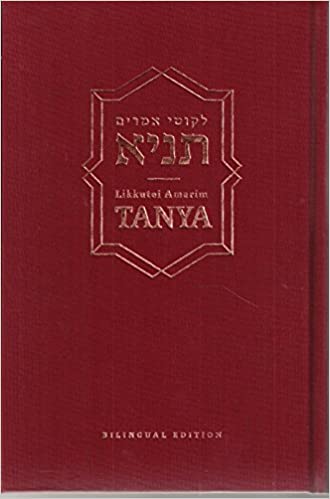Arutz Sheva Staff
Rabbi Shimon Aisenbach – Video & Lecture http://www.israelnationalnews.com/Articles/Article.aspx/25562
The Tanya (Hebrew: ????) is an early work of Hasidic philosophy, by Rabbi Shneur Zalman of Liadi, the founder of Chabad Hasidism, first published in 1797. Its formal title is Likkutei Amarim (“collection of statements”). But is more commonly known by its opening word, Tanya, which means “it was taught in a beraita”. It is composed of five sections that define Hasidic mystical psychology and theology as a handbook for daily spiritual life in Jewish observance.
The Tanya is the main work of the Chabad philosophy and the Chabad approach to Hasidic mysticism, as it defines its general interpretation and method. The subsequent extensive library of the Chabad school, authored by successive leaders, builds upon the approach of the Tanya.
Chabad differed from “Mainstream Hasidism” in its search for philosophical investigation and intellectual analysis of Hasidic Torah exegesis. This emphasized the mind as the route to internalizing Hasidic mystical dveikus (emotional fervor), in contrast to general Hasidism’s creative enthusiasm in faith. As a consequence, Chabad Hasidic writings are typically characterized by their systematic intellectual structure, while other classic texts of general Hasidic mysticism are usually more of a compilation.
As one of the founding figures of Hasidic mysticism, Rabbi Schneur Zalman, known as the Alter Rebbe and his approach in the Tanya are venerated by other Hasidic schools. In Chabad, it is called “the Written Torah of Hasidus”, with the many subsequent Chabad writings being relatively “Oral Torah” explanation. In it, the Alter Rebbe brings the new interpretations of Jewish mysticism by the Baal Shem Tov, founder of Hasidism, into philosophical articulation and definition. This intellectual form synthesises Hasidic Divine Omnipresence and Jewish soulfulness with other historical components of Rabbinic literature, embodied in the Talmud, Medieval philosophy, Musar (ethical) literature and Lurianic Kabbalah.
The Tanya has therefore been seen in Chabad as the defining Hasidic text, and a subsequent stage of Jewish mystical evolution.
The Tanya compacts four millennia of Jewish wisdom to answer the great personal and existential questions of life. It has revolutionized the way we think about G -d the human soul, the world and our place in it.
Among the topics:
Is G -d knowable?
What is our purpose in life?
Why is life such a struggle?
Why is my inner self full of contradictions?
Does the universe really “exist” or is it all an illusion?
How to deal with my anger, jealousy, anxiety and despair?
To additionally note: Relevant to the present time and circumstance, based on this which is written about the Zohar of it (the Zohar) being the “Ilana d’chaya “the “tree of life”. This would indeed refer to the Tanya, as the Tanya bringing the word and spirit of the Zohar to actual grasp, comprehension, and appreciation. It is without any shade of doubt that by learning the Tanya – and in this backdrop as we begin the learning of this new segment of Tanya – as being the “tree of life” can be an extra protection from the virus that the world is unfortunately dealing with, and more so has the ko-ach (energy) to be”H turn the matter around accordingly.
In this context, there is a quote from the Gr”A (Rabbi Eliyahu, known as the Gaon of Vilna) regarding the refraining from learning of pni-miyut (the inner esoteric part) of Torah (interestingly, he on his own very much invested in learning pnimyut haTorah, and for that matter wrote a few volumes on this study):
“…and as long as he does not understand the secret [of the Torah matter], even the pshat (the literal meaning) is not clear to him, and one who could perceive the secrets of Torah and did not make an attempt to do so he is judged with severe judgment r”l [Heaven forsake us], and those who occupy themselves with hints and secret of Torah the yetzer harah (evil inclination) cannot entice them”.
With hope and prayer as we begin this segment, Shaar Hayichud vehaEmunah ,on: “the factors that arouse love and fear, and their foundation, is a pure and faithful belief in the Unity and Oneness of G-d”, we will merit reaching the time concerning which the prophet says: “And the world will be filled with the knowledge of G-d as the waters cover the ocean bed” (Isaiah 11: 9) And the prophecy: “I will remove….the spirit of impurity (this including all negative, and distrustful energy) from the land”, (Zechariah 13:2). Amen.






